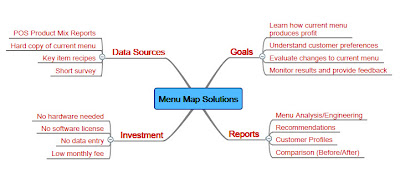Unpopular menu items with relatively low gross profit potential should be eliminated. Some operators avoid removing an unpopular item because a valued guest always orders the item. Take the item off the menu and get even closer to your valued guest. Stock enough ingredients to produce their signature item on the days they enjoy dining out. You'll improve your overall menu performance and you'll get closer to your valued guest.
Another great tool for improving gross profit is wait staff recommendations. When a guest asks "What do you recommend? I've never been here before." the 2 most popular menu items should be promoted. Selling items preferred by your regulars to newcomers is a simple tool ignored in many restaurants.

Try to restrict the number of daily specials. Unless your specials are merely promotions of base menu items, try to limit specials to 3 per meal period. When I visit a new restaurant and the server goes on for several minutes trying to explain the merits of 6 or 7 specials, I get concerned. Are they trying to blowout yesterday's unpopular specials? Maybe they only prepared 4 items tonight and 3 are leftover.
By promoting popular items and eliminating unpopular items, you'll bank more dollars. New menu ideas will come and go over time. Use these trendy items for busy night specials. Always sell your top items to newcomers.



